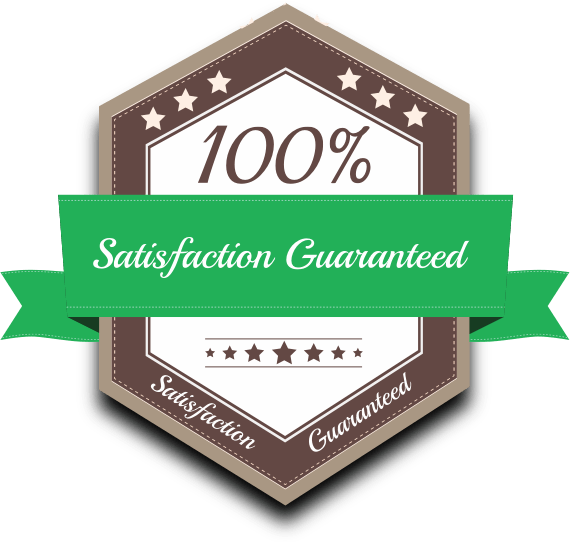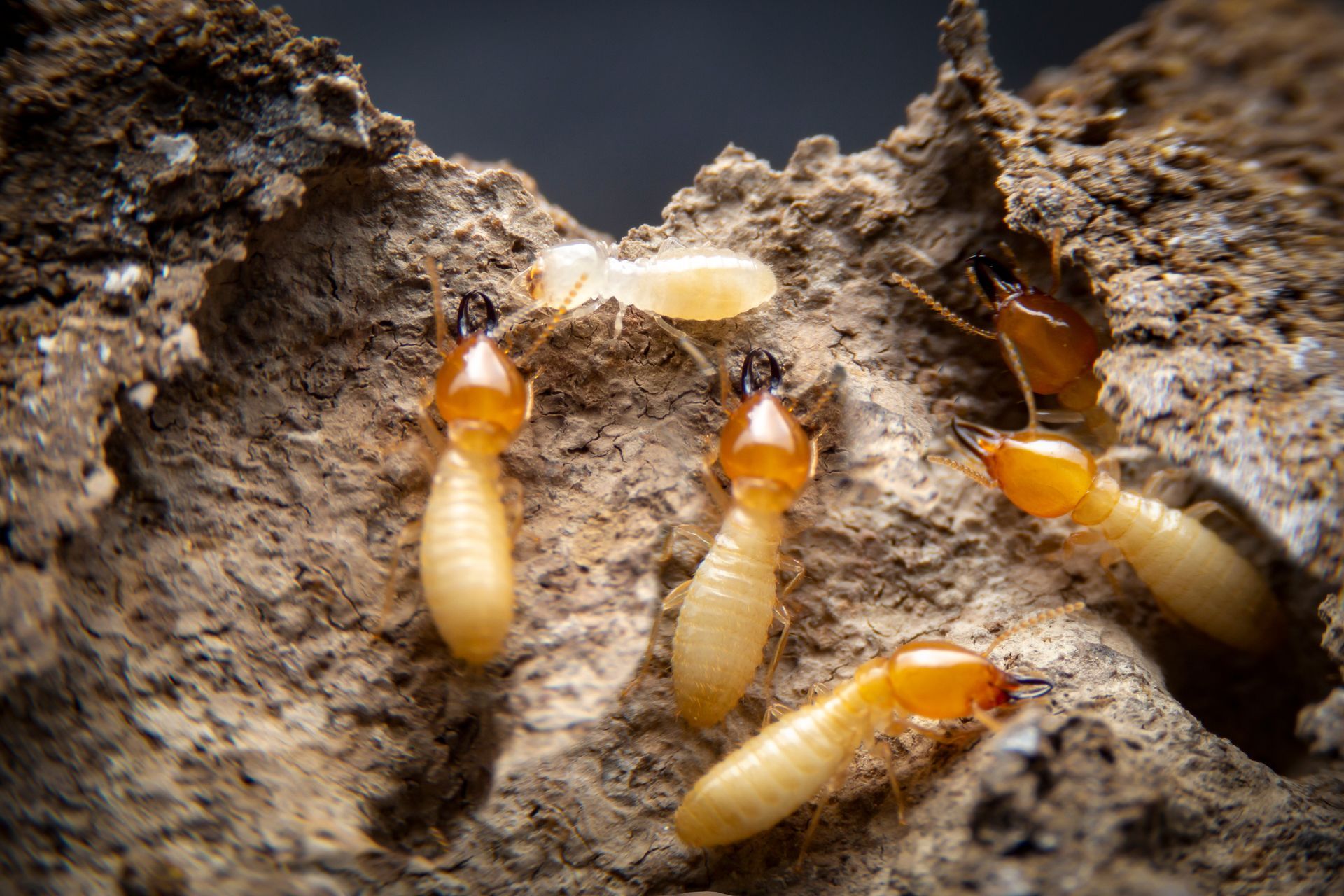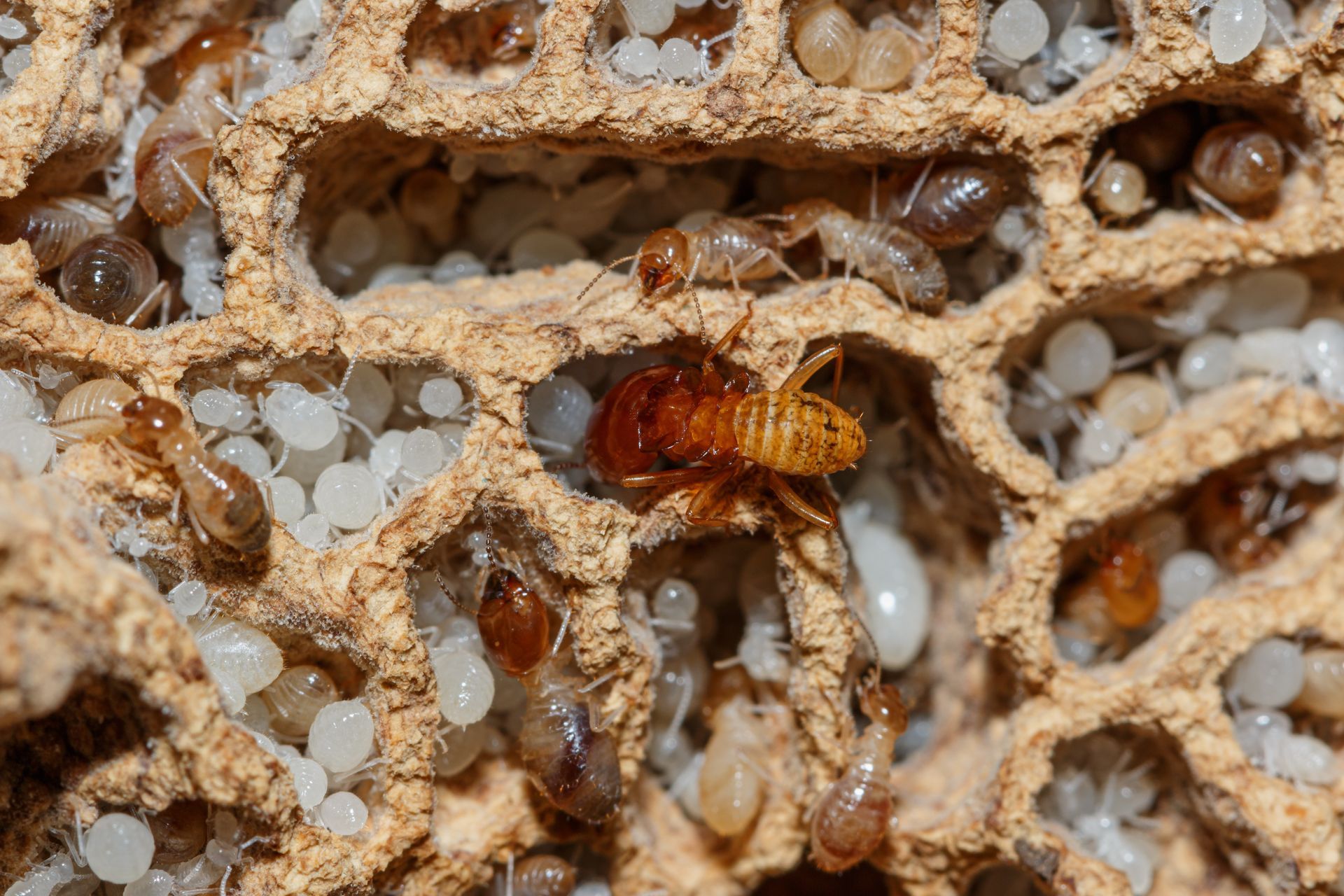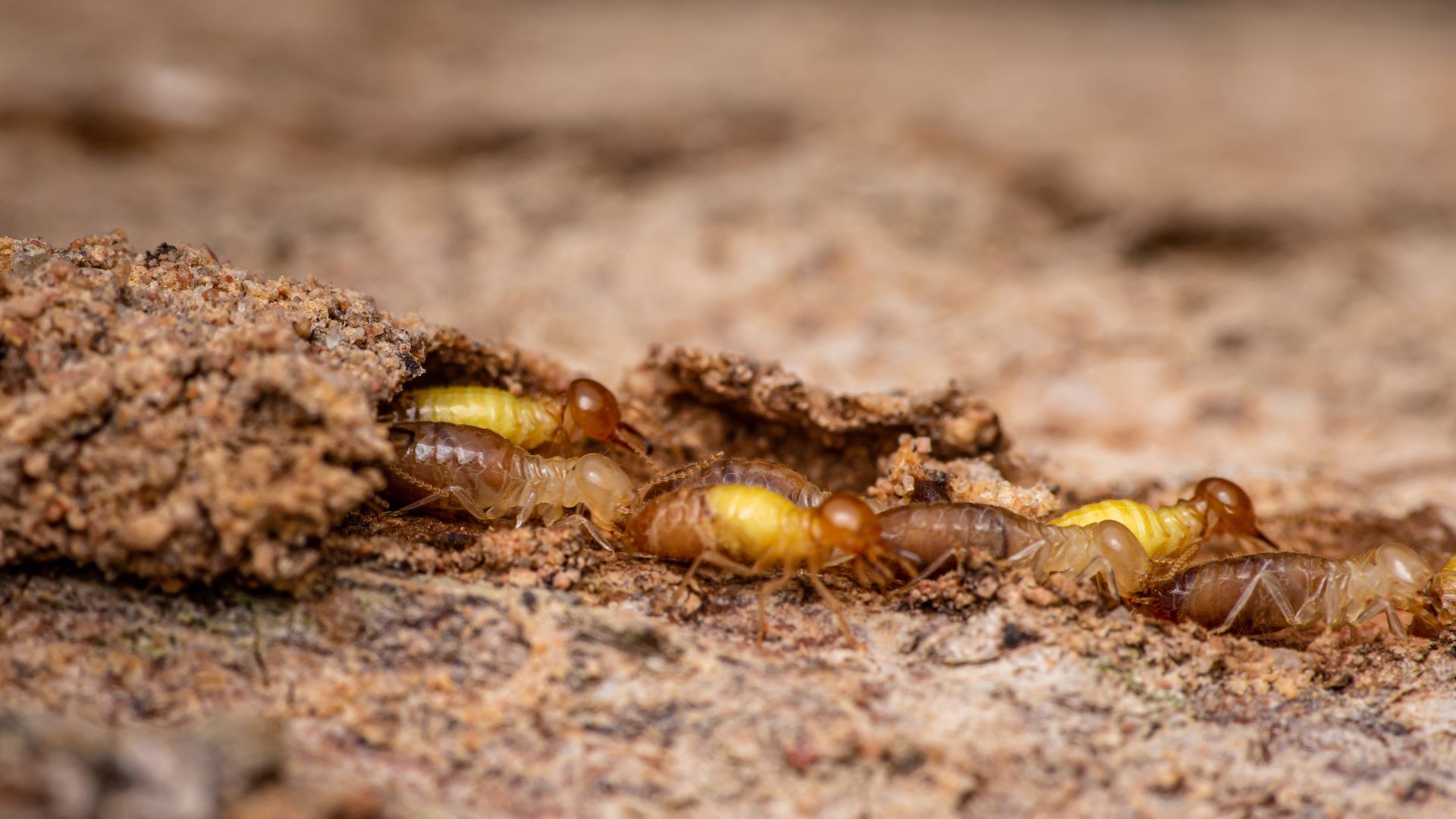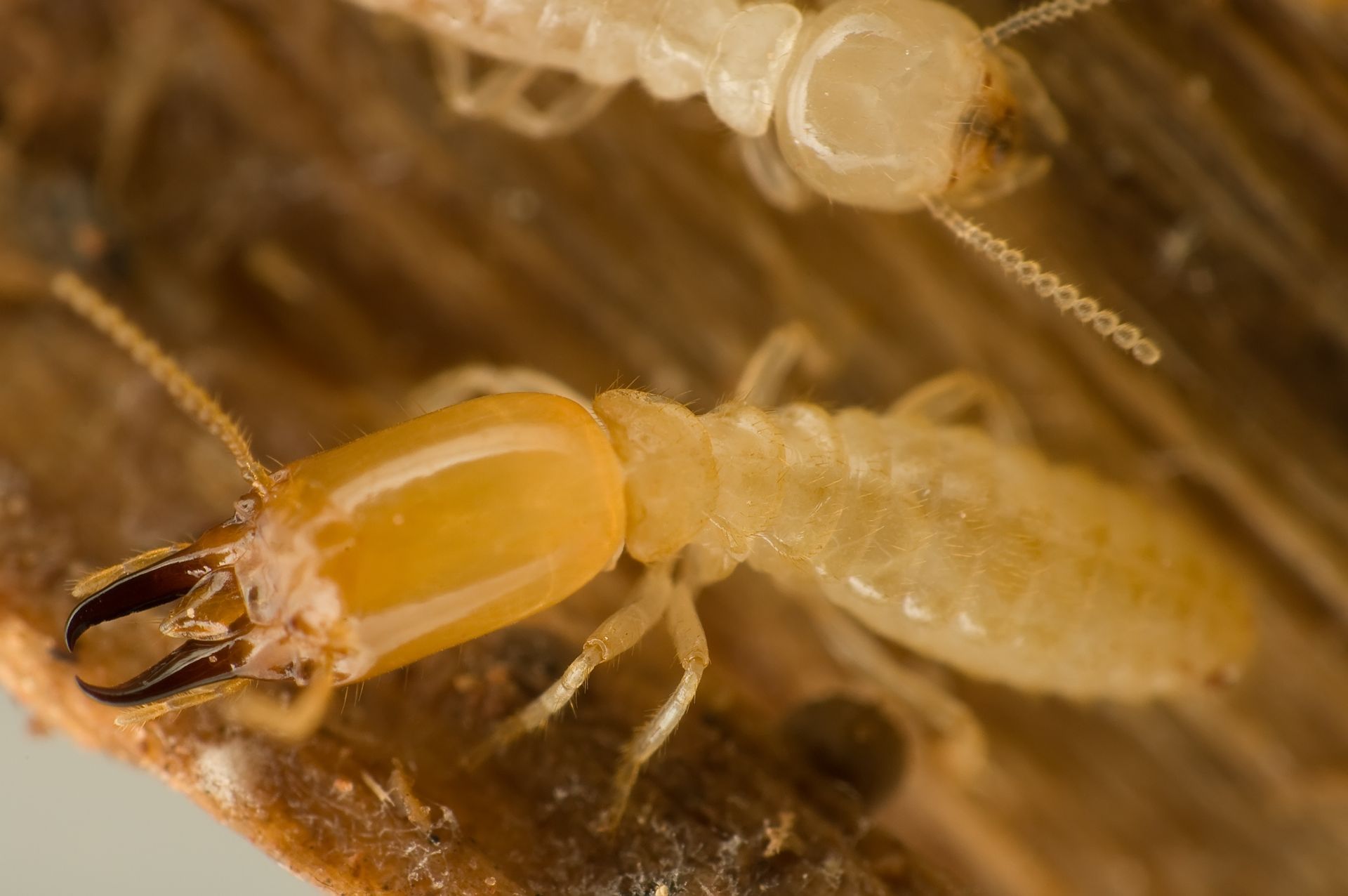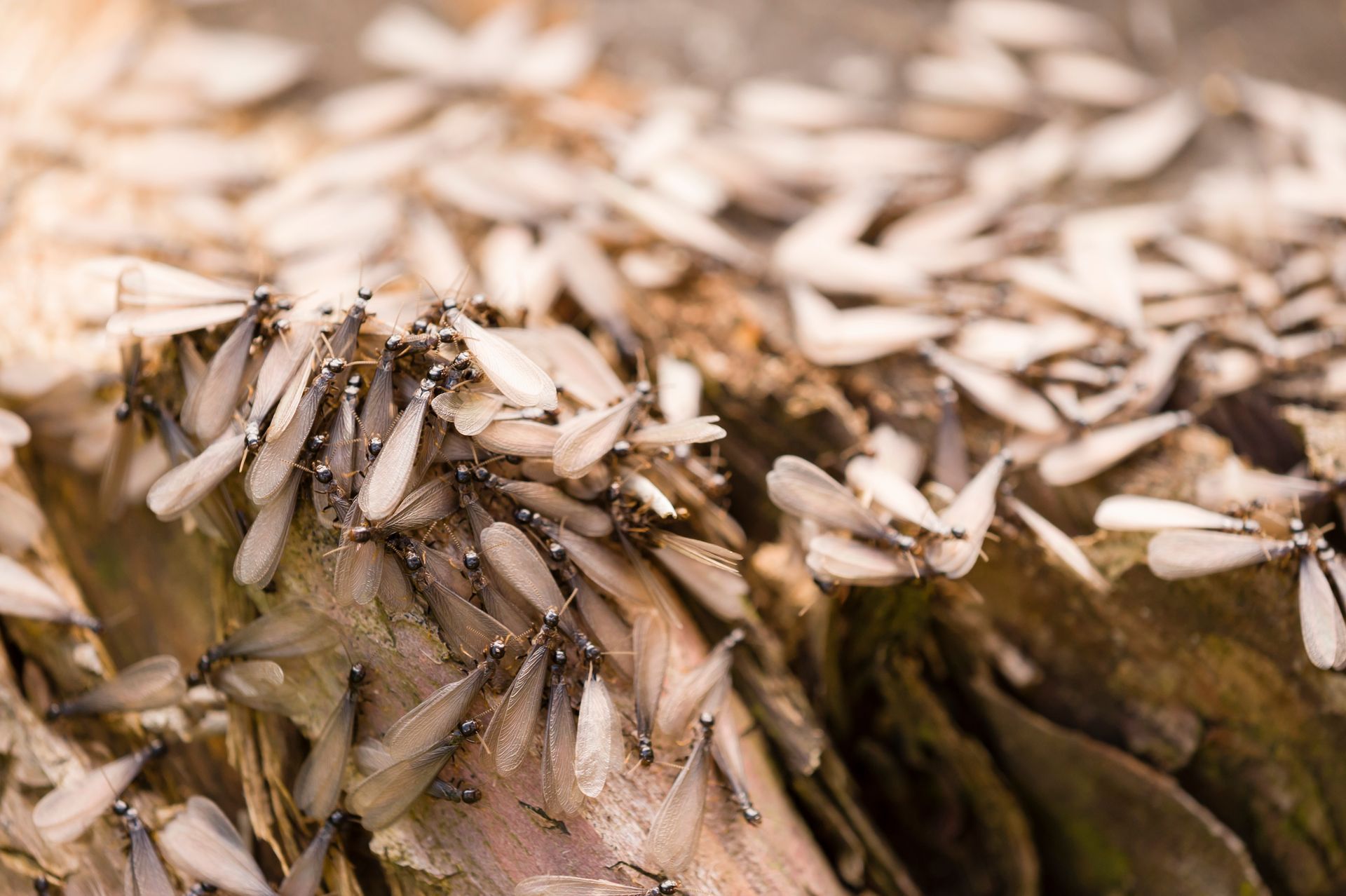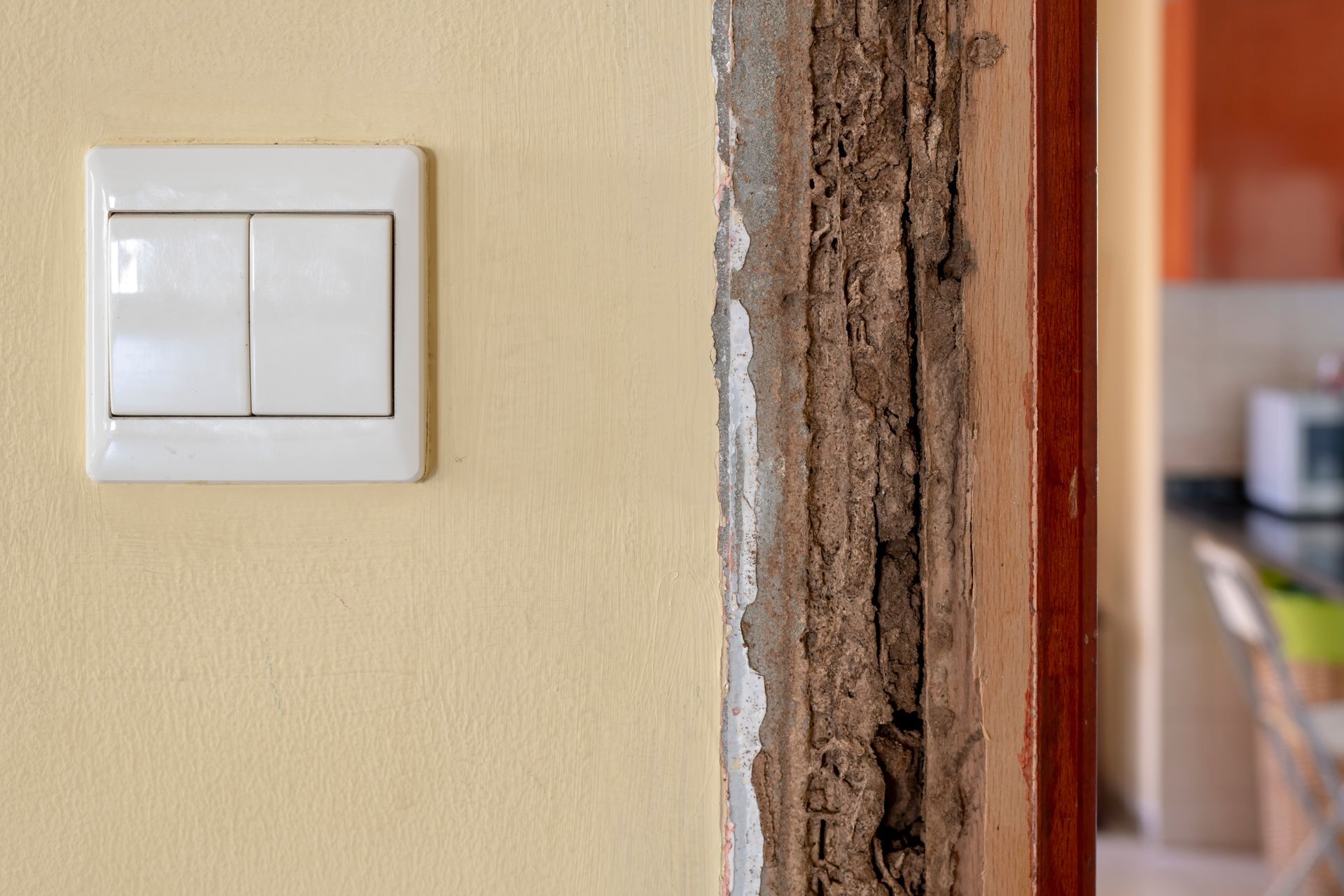Drywood Termite Treatment and Pest Control Services
These silent invaders don't need moisture, soil, or even the slightest hint of dampness. Drywood termites in their natural ecosystems are integral for breaking down wood debris but once they enter your home, they cause extensive damage to the wooden structure. Living entirely within the dry wood they consume, these pests can tunnel through structural beams, furniture, and decorative elements for years before you spot the first signs of trouble. When swarmers finally emerge or tiny pellets begin to accumulate on your windowsills, the internal damage may already be substantial. EcoGuard's specialized detection and elimination systems target these elusive pests at their source to provide comprehensive protection for your greatest investment.
Call today to a free estimate. 866-350-9954
Pest FREE Guarantee
All Natural Services
Licensed & Insured
Competitive Pricing
Professional Drywood Termite Control Experts
What sets our termite specialists apart isn't just their certification, it's their sixth sense for detecting drywood termite activity where others see nothing but intact wood. Our technicians have honed their skills through thousands of inspections and have learned to read the subtle signs that indicate these secretive insects. Every kick out hole, every pattern of gallery formation, and every seasonal swarming tendency informs our approach to your unique situation. When you're facing an opponent that's evolved to hide in plain sight, you need professionals who can transform your termite problem into a termite solution.
Why Drywood Termites Are a Serious Problem
Forget what you think you know about termites. Drywood variants play by different rules:
- They're completely self-contained which means no mud tubes, no soil contact, no external signs until damage is well underway. A single reproductive pair can establish a thriving colony inside your structural beams without ever revealing their presence.
- Unlike termites that feed in certain environments, drywood colonies happily consume structural elements including furniture, structural beams, subfloors, and decorative woodwork with equal enthusiasm.
- Drywood colonies may develop slower than their subterranean cousins, but their persistence makes them formidable opponents. Over 3-7 years, they steadily hollow out wooden elements while leaving thin, deceptive veneers intact.
- New infestations often arrive in furniture, picture frames, or decorative items, bypassing your home's external defenses entirely. That vintage bookshelf could be harboring more than just classic literature.
How to Get Rid of Drywood Termites
Every battle requires the right weapons. Here's how EcoGuard eliminates these persistent pests:
- Structural Fumigation: The gold standard for complete elimination. We seal your entire home under specialized tenting and introduce a controlled gas treatment that penetrates every nook and cranny where termites hide. This comprehensive approach leaves no survivors, reaching colonies in even the most inaccessible areas of your home.
- Heat Revolution Treatment: Our thermal remediation system brings precision controlled heat to termite infested areas by raising temperatures to levels deadly for insects while remaining safe for your home's structure. This chemical free alternative eliminates entire colonies without residues or lingering odors.
- Precision Termiticide Injection: Using state of the art micro drilling technology, we deliver powerful termiticides directly into gallery systems with minimal structural impact. Our specialized formulations remain active within the wood to eliminate current colonies and prevent reinfestation in treated areas.
- Botanical Oil Treatments: When appropriate, we can deploy naturally derived oil treatments that penetrate wood fibers to eliminate drywood termites on contact. Orange oil treatments containing d-limonene extracted from orange peels which offer a lower toxicity option for environmentally sensitive situations and localized infestations, particularly in furniture and decorative items.
- Foam Expansion Technology: Our specialized foam carriers push termiticides deep into wood cavities, expanding to fill galleries and reaching termites that liquid treatments might miss. This advanced delivery system ensures complete coverage in internal spaces created by termite activity.
- Termidor SC Treatments: Our targeted application of Termidor SC creates a powerful protective zone around infestation sites. This non repellent termiticide is undetectable to drywood termites which allows termites to contact, ingest, and share the treatment throughout the colony to ensure the active ingredient is transferred to multiple termites before taking effect.
What Attracts Drywood Termites
Understanding these pests' pathways into your home is the first step toward keeping them out:
- Swarm Season Vulnerability: When reproductive termites take flight during warm, humid evenings in late summer and early fall, they're drawn to light sources and tiny openings around your home. These swarming events create your home's highest exposure risk, as a single successful reproductive pair can establish an entirely new colony.
- Wooden Doors and Windows: The exposed end grain of wooden door frames and window casings creates ideal entry points for drywood termites, especially where weather sealing has deteriorated. These areas provide direct access to wooden structural components, allowing termites to bypass exterior defenses.
- Attic and Eave Exposures: Unprotected wooden eaves, exposed rafters, and attic vents with damaged or missing screens offer drywood termites a direct highway into the structural heart of your home. Once established in attic spaces, colonies can remain undetected for years while steadily expanding their territory.
- Nearby Wood: Wood piles, overhanging branches, untreated decks and patios, and other sources of wood that are connected to your home can act as a bridge that gives drywood termites the access they need to expand their colony into your home.
Drywood Termite Prevention Strategies
Create a termite resistant environment with these protective measures:
- Paint and Seal Exposed Wood: Maintain an intact barrier of paint, varnish, or sealant on all exposed wooden surfaces, paying special attention to end grain areas where wood is most vulnerable to infiltration.
- Screen Every Opening: Install fine mesh screens (20 mesh or finer) over all vents, including attic, foundation, and eave vents. Use weather stripping around doors and windows and seal any cracks or joints in exterior walls to eliminate any tiny openings.
- Create Distance Between Wood and Entry Points: Store firewood, lumber, and wooden decorative items at least 20 feet from your home, and elevate them off the ground. Remove dead trees, stumps, and accumulated yard debris that could host termite colonies within launching distance of your structure.
- Inspect Before You Accept: Carefully examine all wooden furniture, decorations, and building materials before bringing them onto your property. Look for small holes, tiny pellets, or damaged areas that could indicate an existing infestation you don't want to inherit.
- Schedule Termite Specific Inspections: Annual professional inspections are your insurance policy against undetected infestations. Our specialists examine areas most homeowners never see, using specialized tools to detect activity long before visible evidence appears.
- Consider Preventative Treatments: For high risk areas or homes with previous infestations, preventative applications of borate based wood treatments create lasting protection. These treatments penetrate wood fibers to create an inhospitable environment for termites without endangering human or pet health.
Signs of Drywood Termite Activity
Learn to recognize these telltale signs before damage becomes severe:
- Six Sided Frass (Termite Pellets): Unlike the mud like waste of other termite species, drywood termites produce distinctive, six sided pellets about the size of table salt grains that are often found in small piles beneath kick out holes or along windowsills.
- Discarded Wings: After mating flights, reproductive drywood termites shed their wings, which often accumulate near windowsills, door frames, or light fixtures. These delicate, translucent wings provide clear evidence that termites have entered your home.
- Blistered Wood Veneer: As termites hollow out the interior of wooden elements, the thin outer layer may develop small blisters or raised areas. This surface distortion occurs when gallery systems extend close to the surface of wooden structures.
- Hollow Sounding Timbers: Infested areas produce a distinctive hollow sound compared to solid wood. This non-invasive test helps identify potential problem areas for further investigation, particularly in beams, window frames, and door jambs where colonies often establish.
- Tight Fitting Doors and Stuck Windows: As termites consume the wooden elements of door frames and window casings, subtle warping occurs which causes doors to suddenly stick or windows to become difficult to open.
- Clean Edged Galleries: If damaged wood becomes exposed through renovation or repair, look for smooth walled tunnels running with the grain. Unlike the rough, soil filled termite galleries of subterranean termites, drywood tunnels are clean, precisely formed, and free of mud or soil.
DIY Treatments vs. Professional Elimination
Those termite sprays at the hardware store might seem tempting, but there's a reason they rarely solve drywood termite problems. Consumer products simply can't penetrate the complex gallery systems these insects create deep within wooden structures. Even if you eliminate the termites you can see or reach, colonies extend far beyond visible evidence which allows them to safely continue their destruction beyond the reach of retail products.
EcoGuard's professional approach starts with what DIY methods can't provide. Our technicians use specialized equipment to map the true extent of infestation throughout your structure. Based on this complete picture, we deploy treatment protocols calibrated to your specific situation, whether that means whole structure fumigation, targeted injections, or heat remediation. Each approach reaches termites where they live and feed, eliminating entire colonies rather than just treating symptoms. We follow every treatment with verification procedures to ensure complete elimination.
Specialized Commercial Drywood Termite Solutions
Businesses face unique challenges when dealing with drywood termites, from specialized wooden structures to strict operational timelines and regulatory requirements. Our commercial division has developed industry specific protocols for:
- Hospitality and Lodging Facilities
- Restaurants and Food Service Properties
- Multi-Unit Residential Complexes
- Healthcare and Medical Facilities
- Educational Institutions
- Office Buildings and Corporate Campuses
- Historic Properties and Museums
- Retail and Commercial Spaces
- Entertainment Venues and Theaters
- Religious Institutions and Community Centers
- Lumber Retailers
- Home Improvement Stores
For immediate service for all of your termite control concerns please call 866-326-2847 or complete this form.
EcoGuard Guarantee
When EcoGuard treats your property for drywood termites, we stand behind our work with one of the industry's most comprehensive protection commitments. If termite activity recurs in treated areas during your coverage period, we'll return promptly to reassess and retreat at zero cost to you.
Our termite warranty includes detailed documentation of all treatments performed, specific areas covered, and comprehensive recommendations to prevent future infestations. We don't just treat the current problem, we help protect against tomorrow's risks through scheduled inspections, early detection protocols, and preventative recommendations tailored to your property's specific vulnerabilities.
Termite Pest Control Process
Inspection: We begin by deploying our multi tool detection system to create a comprehensive map of termite activity throughout your property. This detective work reveals not just obvious infestations, but hidden colonies that would otherwise continue destroying wood beyond your awareness.
Treatment: Based on your unique infestation pattern, property characteristics, and personal preferences, we design a custom treatment protocol. Our specialists explain each option's advantages, process, and expected outcomes so you can make informed decisions about your home's treatment.
Prevention: Alongside active termite elimination, we identify and address the conditions that made your property attractive to termites initially. This may include sealing entry points, installing protective screens, applying preventative treatments to high risk areas, or recommending structural modifications that reduce future infestation risk.
On Going Monitoring: Following treatment, we conduct thorough post elimination inspections to verify complete colony eradication. Your protection continues with scheduled follow up inspections that catch any new activity before significant damage occurs.
Seasonal Drywood Termite Management
Spring: As temperatures warm, overwintered drywood termite colonies resume active feeding and begin preparing for reproductive cycles. Our spring services focus on comprehensive property inspections to identify colonies emerging from winter dormancy before they expand.
Summer: Peak reproductive activity occurs during warm summer months when mature colonies produce alates (winged reproductives) that emerge to establish new infestations. Our summer protocols emphasize monitoring for swarm events, implementing treatments to eliminate parent colonies before they can produce reproductives, and creating protective termite barriers.
Fall: Autumn brings a second, often smaller swarming period in many regions as colonies take advantage of mild temperatures before winter. Our fall services focus on eliminating active colonies before they enter slower winter feeding patterns and sealing potential entry points against late season swarmers.
Winter: Though feeding activity slows during colder months, drywood termites remain active within the climate controlled environment of your home. Termite inspectors can take advantage of this slow period to inspect homes thoroughly and provide treatment.
Drywood Termite FAQs
What is the best treatment for drywood termites?
Whole structure fumigation provides the highest success rate for widespread infestations by penetrating all wooden elements simultaneously and eliminating entire colonies regardless of their location within the structure. For localized infestations, techniques like targeted heat treatment or precision injection systems can deliver excellent results with less disruption to your household routine. The optimal approach depends on infestation extent, distribution pattern, and your property's specific characteristics, which is why professional assessment forms the foundation of effective treatment selection.
Can you get rid of drywood termites without tenting?
Several effective non tenting options exist, including localized heat treatments, borate applications, and targeted termiticide injections for well-defined local infestations. These alternative approaches work best when colonies are isolated to specific areas rather than distributed throughout multiple structural elements. Professional inspection with advanced detection tools is crucial for determining whether non tenting methods will provide complete elimination or if more comprehensive approaches are needed for your specific situation.
How long does it take for drywood termites to destroy a home?
Drywood termites typically require 3-8 years to cause significant structural damage, with the timeline varying based on colony size, wood type, and environmental conditions. The damage progression accelerates as colonies mature, with multiple colonies potentially reducing load bearing capacity in critical structural elements by 30-40% before obvious signs appear. Regular professional inspections provide early detection that prevents the extensive, expensive damage that occurs when colonies develop uninterrupted for extended periods.
How can I tell if I have drywood termites versus other termite species?
Drywood termites leave distinctive hexagonal frass pellets resembling small grains of salt or pepper near kick out holes, while subterranean species don't produce visible pellets. Their galleries are clean, smooth walled tunnels running with wood grain without mud tubes or soil, unlike the muddy galleries of subterranean termites. Additionally, drywood swarmers are typically larger (approximately 1/2 inch with wings), often appearing during daylight hours in late summer or early fall rather than the spring swarms common with other species.
What signs indicate I need professional drywood termite treatment rather than trying to handle it myself?
Finding multiple frass accumulations throughout your home suggests widespread gallery systems beyond the reach of consumer products. Discovering evidence of drywood termites in structural elements like support beams, floor joists, or wall studs indicates potential structural compromise requiring professional assessment. When swarmers or discarded wings appear inside your home, this signals a mature colony likely already causing significant damage which requires comprehensive professional intervention rather than limited DIY approaches.
How extensive is a typical drywood termite infestation by the time it's discovered?
Most infestations have been established for 2-5 years before homeowners notice the first obvious signs, with colonies typically containing 2,500-3,000 termites across extensive gallery networks. Professional inspection often reveals that visible evidence represents only about 30% of the actual infestation, with significant colony portions remaining hidden within walls, ceilings, and structural elements.
What are the risks of delaying professional treatment once drywood termites are detected?
Postponing treatment allows colonies to grow exponentially, with mature queens capable of producing up to 100 eggs weekly which dramatically accelerates structural damage rates. Reproductive swarmers will emerge from established colonies during appropriate seasonal conditions, potentially creating new satellite infestations throughout your home and multiplying the damage footprint.
How do professional termite companies determine the best treatment approach for my specific infestation?
Professionals employ special tools to map colony distribution throughout the structure, often revealing infestations not visible through conventional inspection. They evaluate the specific termite species, colony maturity indicators, and location of infestations relative to critical structural elements to assess potential damage severity. Additionally, they consider your home's construction details, presence of sensitive materials or items, and household needs to recommend the most effective approach with minimal disruption.
What's the difference between spot treatments and whole house fumigation for drywood termites?
Spot treatments target specific, localized areas of infestation through drilling, injection, or localized heat application, offering minimal household disruption but potentially missing hidden colonies beyond detection capabilities. Whole house fumigation creates a sealed environment around the entire structure and introduces gas that penetrates all wooden elements simultaneously, eliminating all colonies regardless of their location or accessibility. While fumigation requires temporary relocation (typically 2-3 days), it provides significantly higher success rates for extensive or hidden infestations that spot treatments might miss.
How long does professional drywood termite treatment typically take from inspection to completion?
The complete process typically spans 1-2 weeks from initial inspection through final verification. The inspection and assessment phase usually requires 1-3 days, depending on property size and infestation complexity. The treatment itself varies from several hours for localized approaches to 2-3 days for whole structure fumigation, including preparation and clearance testing. Some treatment protocols include follow up verification inspections scheduled 30-90 days after initial treatment to confirm complete elimination.
Will my family need to leave the home during professional drywood termite treatment?
For whole structure fumigation, complete evacuation is mandatory for 2-3 days while the building is sealed, treated, and then cleared to safe re-entry levels. With localized treatments like spot applications, targeted heat, or injection systems, evacuation requirements range from just a few hours to one day, often with the option to remain in untreated portions of the home. For preventative treatments and barrier applications, no evacuation is typically necessary as these targeted approaches affect only specific areas with minimal disruption.
Are drywood termite treatments applied by professionals considered safe for areas used by pets and children?
Modern professional termite management employs non-toxic solutions and application methods designed with safety as the priority. They follow strict protocols that minimize exposure risks for family members and pets. Treatment areas are secured until products have dried or dissipated to levels determined safe through rigorous testing procedures and regulatory standards. For fumigation, specialized monitoring equipment verifies complete gas removal before reentry, while localized treatments use precise application techniques that limit product exposure to treatment zones only.
How often should I have professional termite inspections after treatment?
For the first year after treatment, quarterly inspections are optimal to verify continued colony elimination and detect any new activity before it progresses. After this initial period, annual professional inspections should be scheduled as preventative maintenance to identify new infestations before significant damage occurs. Additional inspections should follow nearby construction, major landscaping changes, or severe weather events that might compromise protective barriers or introduce new termite pressure to your property.
Can drywood termites return after professional treatment?
New drywood termite colonies can establish after treatment if reproductives enter through unsealed entry points or arrive in infested furniture or decorative items brought into the home. The risk varies by treatment type, with fumigation and heat providing complete elimination but no residual protection, while some liquid treatments create lasting protective barriers. Comprehensive management programs include preventative measures and scheduled monitoring to address this risk and prevent reinfestation before damage occurs.
What preventative services do professional termite companies offer to stop future infestations?
Professional companies apply specialized borate treatments to vulnerable wood surfaces that create long lasting barriers toxic to termites but low toxicity for people and pets. They install termite resistant screens over vents and openings to prevent swarmer entry while maintaining proper ventilation for your home. Additionally, they provide scheduled inspection services using advanced detection technology to identify early signs of new activity, allowing for immediate intervention before colonies become established and cause significant damage.
How do termite professionals access hard to reach areas inside walls and structures?
Technicians use fiber optic borescopes inserted through minimal access points to visually inspect wall voids and concealed areas without causing significant disruption to finished surfaces. They employ specialized injection equipment with extended applicator tubes designed to deliver treatments deep into gallery systems through strategic access points. For some treatments, professionals create a precise grid of micro injection sites that allow liquid termiticides to penetrate throughout wooden elements while minimizing structural impact.
How much structural damage can drywood termites cause if left untreated by professionals?
Untreated colonies can reduce the load bearing capacity of structural beams by 30-40% within 5-7 years, creating risk of sudden structural failures during high stress events like storms or earthquakes. Multiple colonies typically hollow out wooden supports, floor joists, and roof trusses while leaving thin veneers intact, masking damage severity until catastrophic failure occurs. Extensive infestations can ultimately require tens of thousands of dollars in structural repairs, compromised wood replacement, and temporary support installation during reconstruction.
Do homeowner's insurance policies typically cover professional termite treatment?
Most standard homeowner's insurance policies specifically exclude termite damage and treatment costs, considering this damage preventable through routine maintenance and inspection. Some premium policies offer limited coverage for sudden and accidental damage resulting from termite activity but rarely cover the treatment itself.
What qualifications should I look for when choosing a termite control company?
Select providers whose technicians hold industry recognized certification in termite management along with required state licensing credentials. Look for companies with substantial specialized experience in drywood termite treatment specifically, not just general pest control services.
Additional Termite Resources
Additional Pest Commonly Treated
See our Pest Library for a full list of insects we treat for. If you don’t see what you are looking for give us a call. We are always here to help! EcoGuard Pest Management provides eco-friendly services for both residential and commercial properties.
Why Choose EcoGuard?
- A pest free guarantee
- Green & ecofriendly pesticides that are state approved
- Licensed, bonded, and insured services
- Competitive pricing



